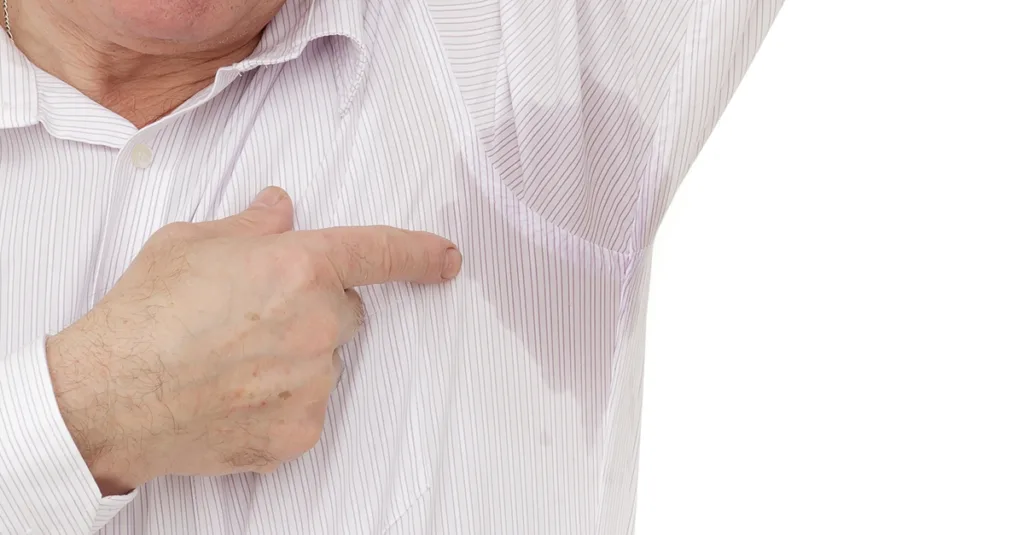It’s frustrating to slip on a perfectly good shirt only to discover stubborn yellow sweat stains clinging to the underarms. Whether it’s your favorite white tee, a business blouse, or that well-tailored button-down you reserve for special occasions, sweat stains steal that clean, crisp look we all strive for. Understanding how to get sweat stains out of shirts goes beyond simple laundry hacks—it’s about reclaiming our wardrobe and keeping our clothes looking their best for longer.
We all sweat—it’s natural. But the unsightly yellow marks under our arms are often the result of a chemical reaction between our perspiration and aluminum-based compounds found in many deodorants. Throw in body oils and dead skin cells, and you’ve got the perfect recipe for staining fabric. While drugstore products tout all-in-one solutions, most fail to treat the root of the problem. Luckily, with a combination of household ingredients and proper techniques, there’s a reliable way to remove sweat stains effectively.
Why Shirts Get Sweat Stains in the First Place
Before tackling the issue with remedies, it helps to understand why these stains form and why they seem so difficult to wash out. Sweat itself is mostly water and salt, but when combined with stigma-inducing products like antiperspirants, the interaction with aluminum salts causes discoloration, particularly on light-colored fabrics.
Over time, those residues penetrate shirt fibers, especially cotton, building a grimy, yellowish crust that intensifies with heat from the dryer. That’s why using heat without proper pretreatment can actually “bake in” the stain, making it harder to remove.
Immediate Action: Why Timing is Crucial
The moment you notice perspiration on a shirt, it’s best not to toss it straight into the hamper and forget it. Acting promptly means fewer chemicals set into the fabric.
Take these quick first-aid steps:
- Rinse the stained area under cold water as soon as possible.
- Avoid applying heat (like a hairdryer or ironing) until the stain is fully removed.
- Keep the shirt damp until you’re ready to pretreat it.
Tried-and-True Home Remedies for Sweat Stains
If we’ve learned anything from decades of spilled coffee, grass streaks, and mystery blotches, it’s that many solutions begin right in our own cleaning cabinets. Here’s how to get sweat stains out of shirts using simple ingredients that don’t require a trip to the store.
1. Baking Soda Paste
Baking soda is mildly abrasive and works well for lifting yellow stains from white and light-colored clothing.
Steps:
- Mix 4 tablespoons of baking soda with 1/4 cup of warm water to form a paste.
- Apply directly to the stain and gently scrub using a soft toothbrush.
- Let it sit for 30 to 60 minutes before rinsing with cold water.
- Wash as normal—avoid drying until you’ve confirmed the stain is gone.
2. White Vinegar Soak
White vinegar cuts through oil, deodorant residues, and proteins from sweat. It’s especially gentle on colored shirts.
Steps:
- Pour one part vinegar and two parts cold water into a bowl.
- Soak the soiled part of the shirt for 30 minutes to an hour.
- Rinse and then proceed with regular washing.
3. Hydrogen Peroxide and Dish Soap Combo
This method works wonders on white shirts, as hydrogen peroxide can brighten and disinfect while cutting through tough stains.
Steps:
- Mix one part hydrogen peroxide with one part dish liquid and 2 parts baking soda to form a powerful stain-fighting blend.
- Spread over the stain and rub gently.
- Let it sit for at least an hour before machine washing in cold water.
Note: Always test on an inside seam first—hydrogen peroxide can bleach colored fabrics.
For Delicate and Specialty Fabrics
Silk, wool, and linen require more delicate handling. Avoid strong acids or oxidizers like peroxide. Instead, try this method:
Lemon Juice and Salt
Lemon juice offers natural acidity to break down stains while salt aids in scrubbing without damaging fabric.
Steps:
- Squeeze lemon juice onto the stain.
- Sprinkle a light amount of salt over it.
- Gently rub together and let sit in the sun for 10–15 minutes.
- Rinse and air dry.
Removing Set-In Sweat Stains
It's disheartening to discover that your favorite shirt has been quietly supporting a dried-in sweat stain for weeks. Set-in stains require patience and repeated treatments.
Here’s a thorough approach:
- Soak the shirt in a solution of one part white vinegar, one part hydrogen peroxide, and two parts water for an hour.
- Apply a paste of baking soda and water directly to the stain.
- Let it sit overnight.
- Wash in cold cycle and air dry.
- Repeat if needed.
This method revitalizes well-worn clothing, especially prized shirts you thought were ruined.
Mistakes to Avoid When Treating Sweat Stains
Chasing sweat stains with the wrong methods can do more harm than good. Take care to avoid:
- Using bleach on sweat stains: Particularly on protein-based stains like sweat, bleach can react chemically to darken rather than lighten the area.
- Applying heat too soon: High dryer temperatures set stains permanently.
- Scrubbing too aggressively: This frays delicate fibers, particularly on blouses or linens.
- Neglecting test patches: Always try any remedy on a less noticeable area first to avoid discoloration or fabric damage.
Preventative Measures: Keep Sweat Stains from Coming Back
While understanding how to get sweat stains out of shirts is key, reducing the chances they appear again can save time and stress.
Smart prevention starts with day-to-day habits:
- Switch to aluminum-free deodorants: These minimize chemical reactions with sweat.
- Undershirts matter: A good cotton undershirt absorbs most sweat and prevents direct contact with your shirt.
- Let deodorant dry before dressing: Applying and immediately pulling on a shirt seals residue into fresh fabric.
- Soak problem areas regularly: A monthly hydrogen peroxide pretreatment keeps buildup at bay.
Taking thoughtful care when storing and wearing shirts can keep them pristine longer and dramatically reduce stain formation.
Choosing the Right Shirts for Hot Weather
The shirts we wear—especially in summertime or while doing labor-intensive tasks—make a difference. Breathable fabrics like cotton, bamboo, and linen wick moisture better and leave less residue. If stains are especially troublesome, consider investing in breathable fabric fashions suited to your lifestyle needs.
You might also be interested in practical home decisions that minimize sweating triggers. For example, light home renovations, like improving ventilation in living areas through design-forward solutions, may help—read more in How Much to Renovate a Bathroom.
When to Call It Quits: Retiring an Old Shirt
We’ve all gotten attached to shirts that hold personal meaning—a comfy soccer tee, a poplin blouse tied to a special job interview, or even a floral summer top from a memorable vacation. But when repeated cleaning weakens the fabric or stains won’t budge, it’s okay to part with worn shirts.
Rather than tossing them, consider upcycling ideas like:
- Reusing fabric for quilts or rags
- Turning sleeves into headbands
- Dyeing shirts with natural dyes from vegetables or flowers to mask stubborn discoloration
(You might find inspiration for creative color choices through nature-inspired styles such as Black Flowers for Dramatic Garden Appeal or Tiny White Flowers for Subtle Beauty).
Final Thoughts
Knowing how to get sweat stains out of shirts helps preserve wardrobe favorites and retain confidence in personal appearances. Whether we’re chasing after kids, dressing up for a client meeting, or curling into a soft armchair in our quiet reading nook, our clothes reflect how we feel about our lives and spaces.
Caring for them shouldn’t be complicated. With the right tools and a bit of patience, we can keep our clothes fresher, cleaner, and longer-lasting. After all, just like our homes, our wardrobes deserve clear, thoughtful attention—right down to the smallest detail.



